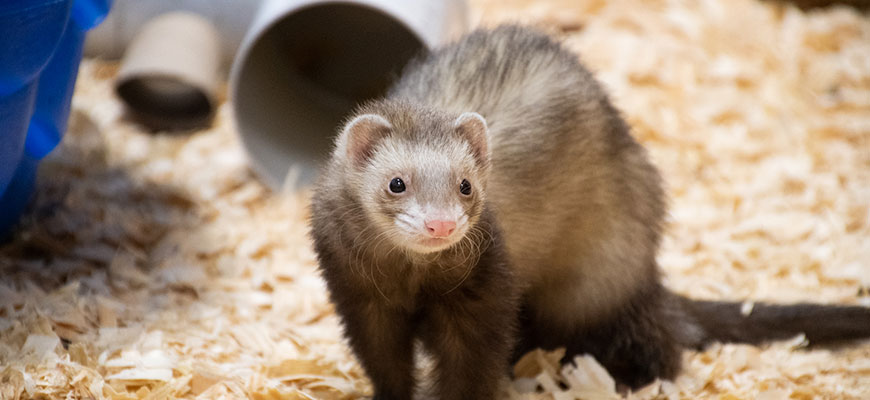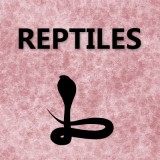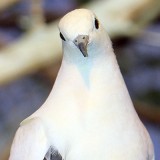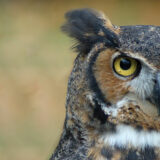RANGE
Europe, Asia and North America
HABITAT
Woods and hilly thickets preferred but adapted to sand dunes and sea cliffs as well.
SIZE
Male: 20 inches long (5 1/2 inches is tail) and weighing up to 3 lbs.
Female: Slightly smaller and a little over half the weight
LIFESPAN
7 – 10 years.
REPRODUCTION
Mate in March through August. Gestation period about 6 weeks. Litter size is usually 3 – 8.
DIET
General: Rats, mice, rabbits, birds and their eggs, frogs, lizards and snakes.
Zoo: High protein dog food, feline diet, fish and bananas
BEHAVIOR
- Largely nocturnal
- Semi-domesticated; they are sometimes used for hunting rabbits (their long, thin bodies and short stocky legs are effective adaptations for burrowing)
- At grooming time, these animals prefer privacy and will hide under something
- Anal gland produces musk which is used to mark territory and is also used for defense
POINTS OF INTEREST
- Ferrets belong to the Mustelidae family which also includes weasels, badgers, otters, minks and skunks
- When taken young, they are easily tamed
- They were domesticated as early as the 4th century B.C.
- These animals are basically gentle creatures but one should be careful not to touch their heads
- Because of their strong body odor, they probably wouldn’t make a desirable pet. In England they were known as “foul-marten”
- Coat is blackish-brown with lighter under fur showing through. Have yellowish patches on ears, face and nose
STATUS
Common throughout Europe. Rare in the British Isles except in Wales, where its numbers are increasing.





